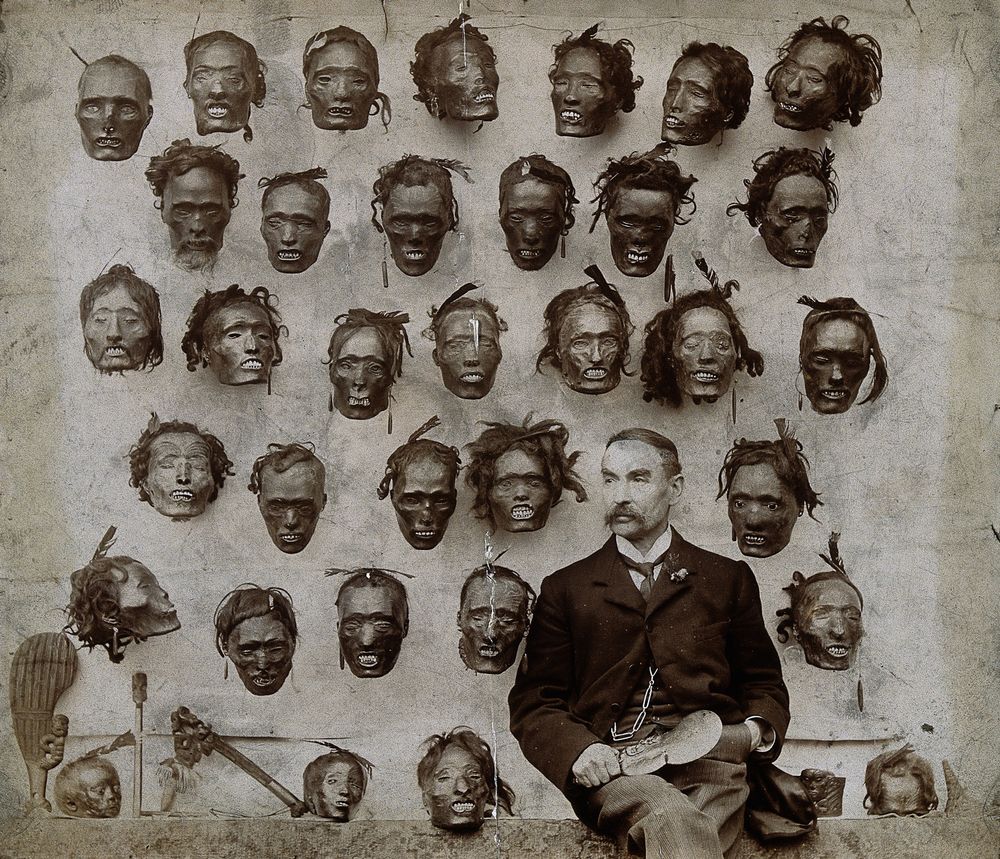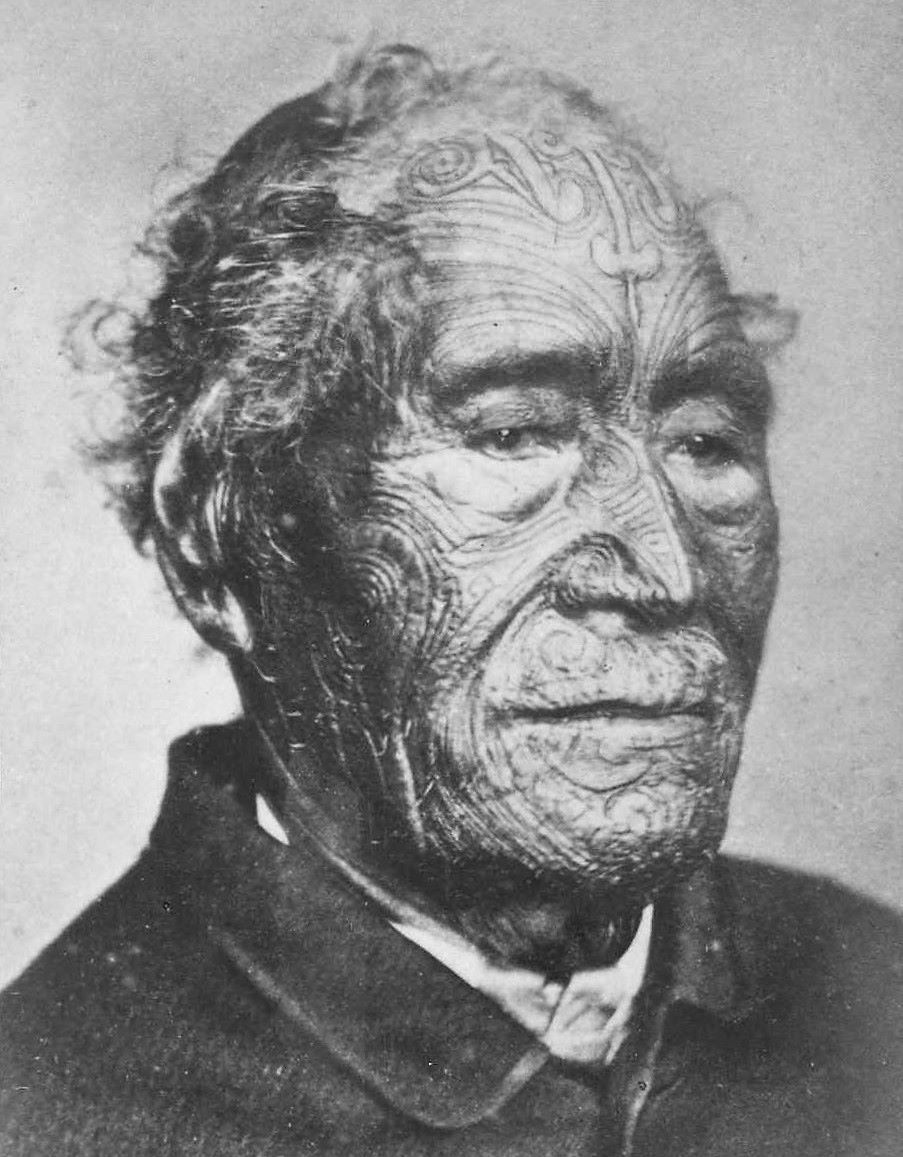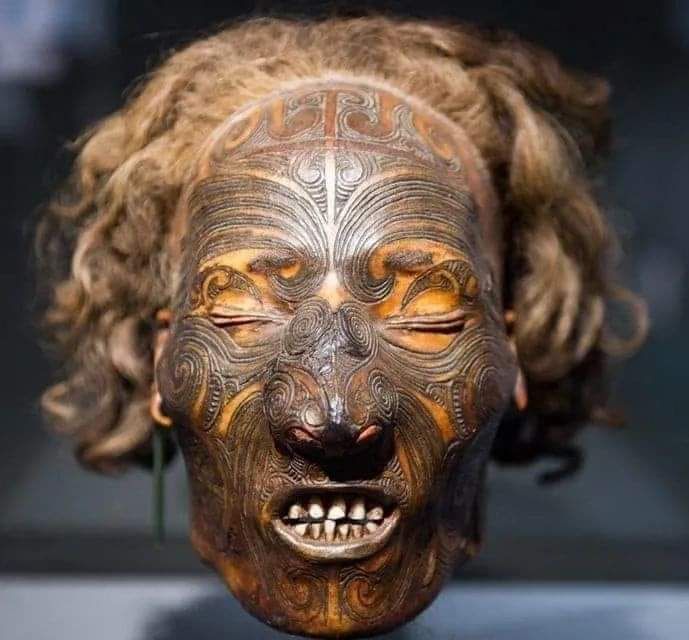These heads are known as mokomokai, and they are a valuable Maori artifact.
Mokomokai collection of British army officer Horatio Gordon Robley.
Photo:Wikimedia
Facial tattoos, known as moko, were once very common among the Maori people.

Unlike modern tattoos, they were much more than mere body decorations.
Tattoos were intricately connected to the social, political, and religious life of the Maori.
Receiving moko constituted an important milestone in ones life and often marked rites of passage such as puberty.

When someone with moko died, often the head was preserved.
First the brain and eyes were removed, and the orifices sealed with flax fibre and gum.
It was then treated with shark oil.

These heads played an important role in rituals and ceremonies relating to war and peace.
Facial tattoo of Maori chief Tuterei Karewa.
Photo:Wikimedia
Moko tattoos on the face of Maori chief Tamati Waka Nene.

Photo:Wikimedia
Moko tattoos on the face of Maori chief Tomika Te Mutu.
One of the most prized item for barter became the musket.
Initially, the Maori traded flax, potatoes, slave women, and tattooed heads for guns and ammunition.

But as the demand for tattooed heads increased, other trade items were deemed less valuable.
For example, it took two tons of flax to purchase one musket.
But the same could be obtained by trading only two heads.
A mokomokai head that was returned to New Zealand.
As the Maori got caught up in the arms race, they became desperate.
They tattooed their slaves and prisoners before beheading them and selling these heads.
Sometimes people were tattooed after deaths.
In 1840 the Treaty of Waitangi was signed, and New Zealand became a British colony.
By then, the export trade in mokomokai had virtually ended.
The practice of Moko itself began to decline.
Some have been repatriated to New Zealand, but many remain in museums and private collections.